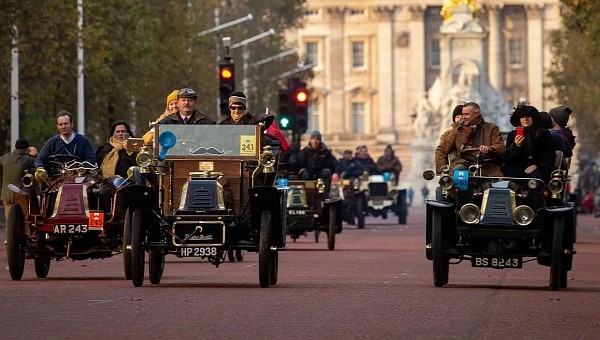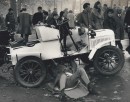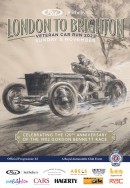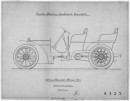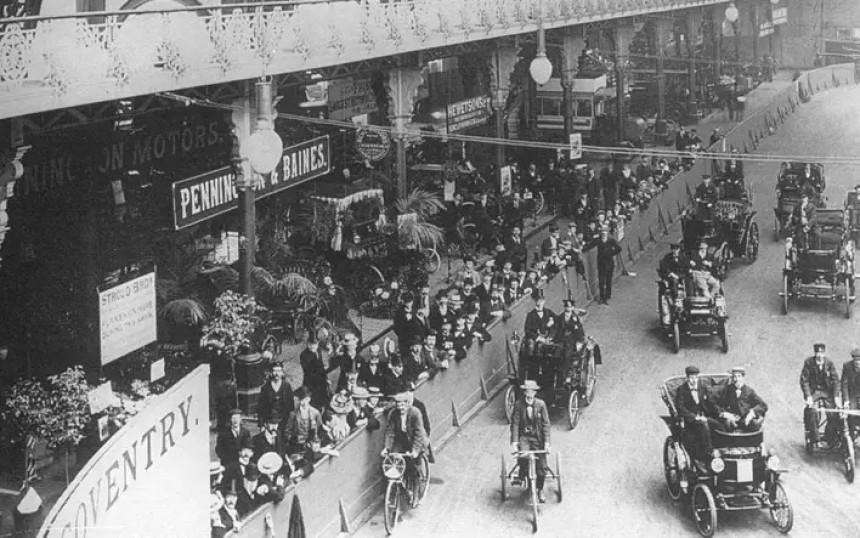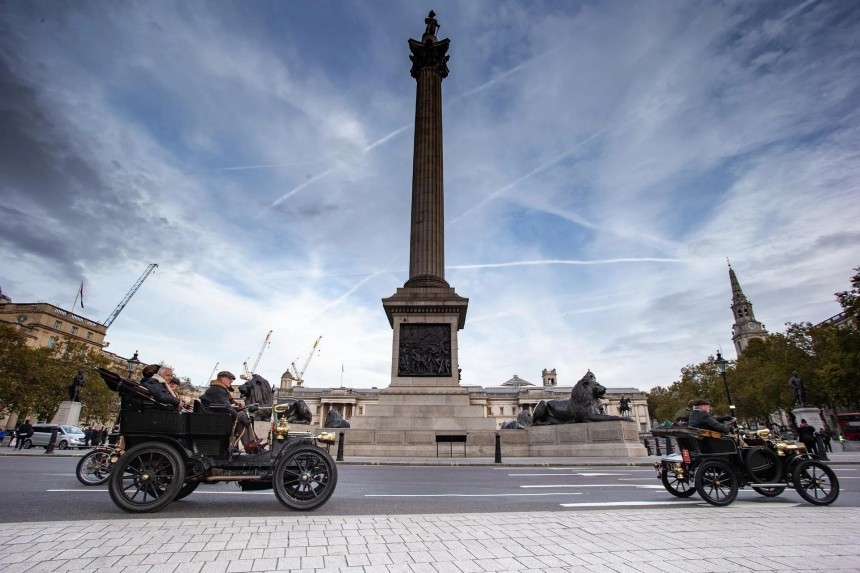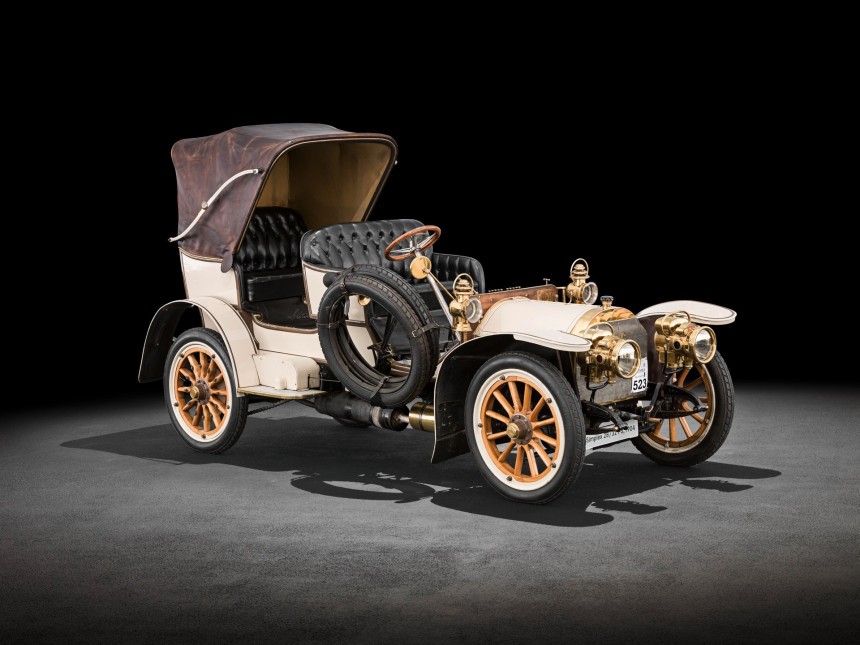One hundred twenty-six years ago, an automobile event in England celebrated the lift on speed limits for self-propelled vehicles and eventually transformed the longest-running car run in the world. It is now known as the London to Brighton Veteran Car Run, and only vehicles produced before 1905 can participate.
Traditionally held on the first Sunday of November, the automotive march has had a continuous yearly occurrence since 1927, with two interruptions. With the passing of the years, the number of participants rose from 33 in 1896 to several hundred expected for the 2022 edition, which takes place this Sunday, starting at 07:03 AM London Time.
Why at that time? Because that’s when the Sun rises, giving the Start signal for this non-competitive classic automobile event. The Run is cleared explicitly of any contest-related rules and regulations except one. The participants must cross the finish line – 60 miles away (97 kilometers) – before 04:30 PM of the same day. Otherwise, they will not receive the participation medal.
The event in 1896 celebrated a fundamental – for the period – change in the traffic code. The speed limit for steam-powered self-propelled vehicles (“light locomotives”) was raised from 2 mph to 12 mph (3.2 kph to 19.2 kph). Quite an emancipation for the nascent car industry still unfolding its hesitant wings across the planet.
Thirty-three cars – let’s call them this – participated in that event, adequately known as the “Emancipation Run,” but only 14 finished. Ironically, the British Emancipation Run saw an American vehicle darting across the final mark – a Duryea model built by a company that entered the motor wagon industry a year before. Quite a performance for the New World carmaker who beat the much more famous Benz and Daimler cars.
The Duryea put over an hour between it and the subsequent arrival, shaming the decade-old German car builders. Gottlieb Daimler, in person, attended the event (as a foreign guest) – the Run was the perfect opportunity to promote this new means of transportation. Coincidentally, 1896 marked the 10th anniversary of the invention of the modern automobile by Gottlieb Daimler and Carl Benz (simultaneously and independently).
Four Benz vehicles also attended the Emancipation Run of 1896. Both German inventors saw their decade-long efforts effortlessly shoved aside by the young American constructor and his speedy automobile.
However, the British car industry soon caught up to speed with the rest of the motoring world. In the following years, several similar races occurred, celebrating the speed-limit adaptation of 1896. In 1903, a new legislative amendment further raised the speed limit to 20 mph (32 kph), and the yearly car reunion was halted.
Until 1927, two English newspapers, the Daily Sketch and the Sunday Graphic, reenacted the 1896 original event. The rest is history, with the London to Brighton Veteran Car Run happening every year since, with two critical exemptions.
First, between 1940 and 1947, due to the Second World War (until 1945) and fuel rationing until 1947. There are stories about one fanatic motorist who put his apportioned gasoline where his addiction was and ran the Run by himself that year). The second obtrusion came in 2020 when the entire (motoring) world came to an almost complete stop.
To pay homage to the massive presence of the company’s automobiles in that historical from 126 years ago, Mercedes-Benz (the proud inheritor of the Daimler-Benz legacy) will be represented by a 1904 Mercedes-Simplex 28/32 hp.
The rules of the modern-era car gathering specify that only vehicles produced before January 1, 1905, are accepted for the London to Brighton Veteran Car Run (LBVCR). By “modern era,” we mean from 1927 onwards. It would be reasonably safe to assume that this period falls under the “modern” grouping.
The German choice for the Simplex is not just age-based. It bears a more profound significance: the 1904 Simplex draws its roots from the first Daimler vehicle to break away from the early automobile design patterns. It is among the first car-looking cars of the manufacturer. It has a clutch, brake, accelerator pedals, steering wheel, hand brake levers, and front and rear seats. And the overall architecture is still valid today (see it it the gallery): the engine sits in its bay; the radiator is at the foremost extremity of the assembly, and it has spare tires (two of them), headlamps, horn, fenders - the lot.
“The Mercedes-Simplex models were groundbreaking at the beginning of the last century. They created the blueprint for modern automotive engineering, which is still valid today,” says Marcus Breitschwerdt, Head of Mercedes-Benz Heritage. The Mercedes-Simplex 28/32 hp attending the London-Brighton Run has a four-cylinder 5.3-liter gasoline engine that produces 32 hp at 1,200 rpm.
Why at that time? Because that’s when the Sun rises, giving the Start signal for this non-competitive classic automobile event. The Run is cleared explicitly of any contest-related rules and regulations except one. The participants must cross the finish line – 60 miles away (97 kilometers) – before 04:30 PM of the same day. Otherwise, they will not receive the participation medal.
The event in 1896 celebrated a fundamental – for the period – change in the traffic code. The speed limit for steam-powered self-propelled vehicles (“light locomotives”) was raised from 2 mph to 12 mph (3.2 kph to 19.2 kph). Quite an emancipation for the nascent car industry still unfolding its hesitant wings across the planet.
Thirty-three cars – let’s call them this – participated in that event, adequately known as the “Emancipation Run,” but only 14 finished. Ironically, the British Emancipation Run saw an American vehicle darting across the final mark – a Duryea model built by a company that entered the motor wagon industry a year before. Quite a performance for the New World carmaker who beat the much more famous Benz and Daimler cars.
Four Benz vehicles also attended the Emancipation Run of 1896. Both German inventors saw their decade-long efforts effortlessly shoved aside by the young American constructor and his speedy automobile.
However, the British car industry soon caught up to speed with the rest of the motoring world. In the following years, several similar races occurred, celebrating the speed-limit adaptation of 1896. In 1903, a new legislative amendment further raised the speed limit to 20 mph (32 kph), and the yearly car reunion was halted.
Until 1927, two English newspapers, the Daily Sketch and the Sunday Graphic, reenacted the 1896 original event. The rest is history, with the London to Brighton Veteran Car Run happening every year since, with two critical exemptions.
To pay homage to the massive presence of the company’s automobiles in that historical from 126 years ago, Mercedes-Benz (the proud inheritor of the Daimler-Benz legacy) will be represented by a 1904 Mercedes-Simplex 28/32 hp.
The rules of the modern-era car gathering specify that only vehicles produced before January 1, 1905, are accepted for the London to Brighton Veteran Car Run (LBVCR). By “modern era,” we mean from 1927 onwards. It would be reasonably safe to assume that this period falls under the “modern” grouping.
The German choice for the Simplex is not just age-based. It bears a more profound significance: the 1904 Simplex draws its roots from the first Daimler vehicle to break away from the early automobile design patterns. It is among the first car-looking cars of the manufacturer. It has a clutch, brake, accelerator pedals, steering wheel, hand brake levers, and front and rear seats. And the overall architecture is still valid today (see it it the gallery): the engine sits in its bay; the radiator is at the foremost extremity of the assembly, and it has spare tires (two of them), headlamps, horn, fenders - the lot.
